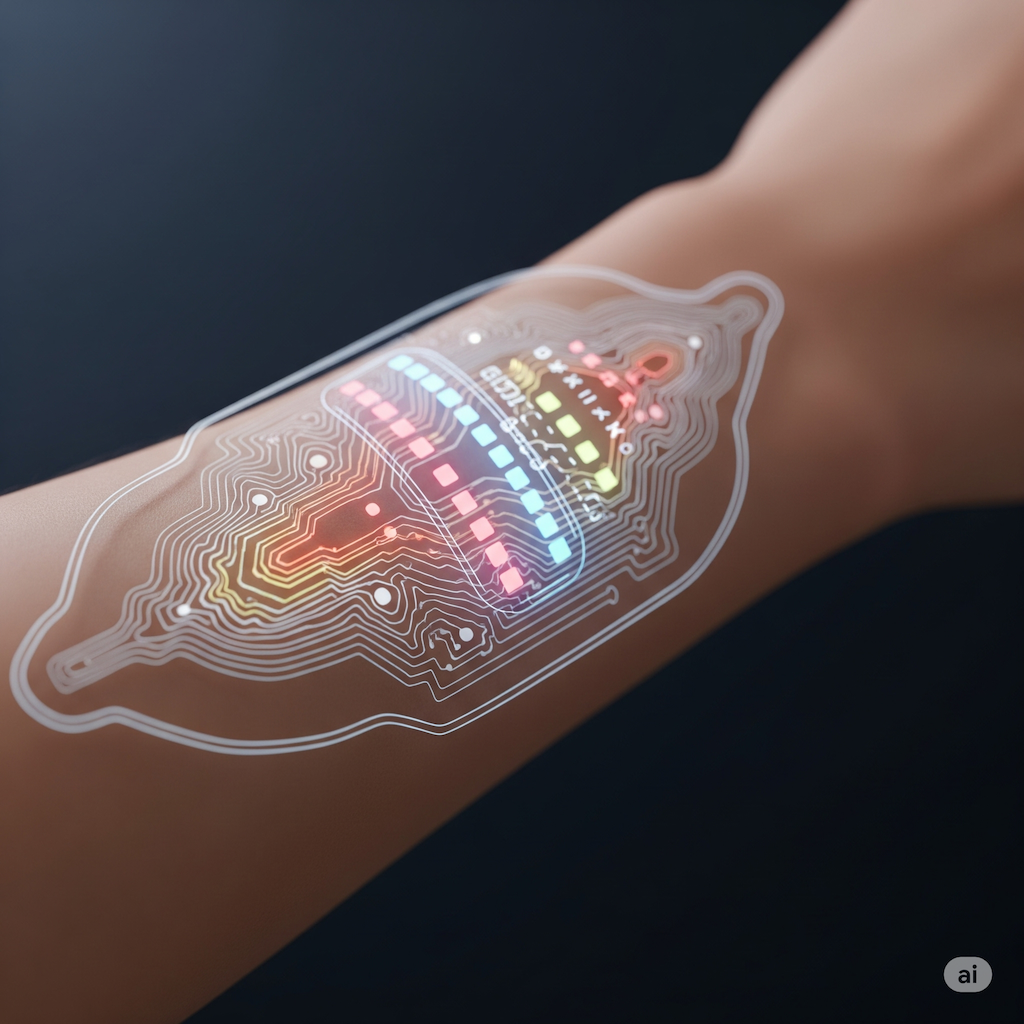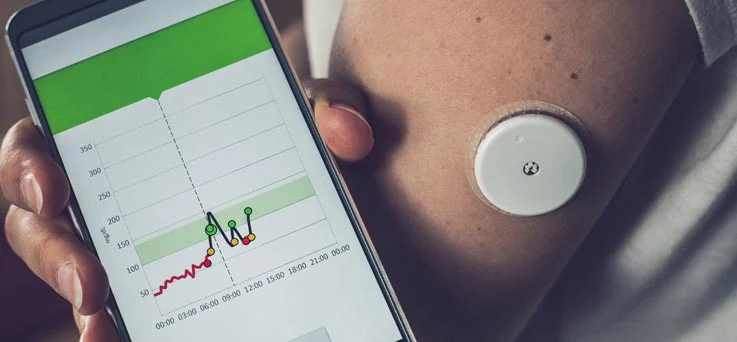
Skin Deep: How Electronic Tattoos Are Becoming the Ultimate Wearable
Imagine a health monitor so thin and comfortable you forget it's even there. This is the promise of electronic tattoos, or e-tattoos. This post explores the cutting-edge technology behind these imperceptible devices and their potential to revolutionize continuous, non-invasive health monitoring.
Skin Deep: How Electronic Tattoos Are Becoming the Ultimate Wearable
The quest for the perfect wearable device is a journey towards invisibility. We want technology that can seamlessly integrate into our lives, providing valuable insights without being obtrusive or cumbersome. While smartwatches and fitness trackers have made great strides in this direction, a new class of device is taking this concept to its ultimate conclusion: the electronic tattoo. These ultra-thin, flexible, and skin-like devices are poised to revolutionize the field of wearable technology, offering a level of comfort and intimacy that was previously unimaginable.
What are Electronic Tattoos?
Electronic tattoos, also known as epidermal electronics, are not your traditional ink-and-needle tattoos. Instead, they are sophisticated electronic circuits that are printed onto a thin, flexible substrate that can adhere to the skin like a temporary tattoo. As described in a recent review in the *Journal of Dermatological Science*, these devices are so thin and lightweight that they can conform to the microscopic wrinkles and creases of the skin, moving and stretching with the body without peeling or breaking. This intimate contact with the skin is what gives e-tattoos their unique capabilities, allowing them to measure a wide range of physiological signals with a high degree of accuracy.
A Window into the Body
The potential applications of e-tattoos in healthcare are vast. They can be used to monitor a wide range of vital signs, including heart rate, respiration, and body temperature. They can also be used to measure more complex physiological signals, such as brain activity (EEG), muscle activity (EMG), and even the biochemical composition of sweat. This ability to continuously and non-invasively monitor a wide range of biomarkers has the potential to transform the diagnosis and management of a variety of medical conditions.
For example, an e-tattoo could be used to monitor the brain activity of a person with epilepsy, providing early warnings of an impending seizure. It could also be used to track the muscle activity of a patient undergoing physical therapy, providing real-time feedback on their progress. In a recent development reported by the Franklin Group at Duke University, researchers are even exploring the use of e-tattoos for 'theragnostics' – a combination of therapy and diagnostics. These devices could not only monitor a patient's condition but also deliver targeted drugs through the skin, creating a closed-loop system for personalized treatment.
The Technology Behind the Tattoo
The development of e-tattoos has been made possible by breakthroughs in materials science and microfabrication. Researchers are using a variety of innovative materials, including graphene, liquid metals, and conductive polymers, to create circuits that are both highly conductive and extremely flexible. The fabrication process often involves printing the electronic components onto a temporary tattoo paper, which can then be applied to the skin with a small amount of water. Once applied, the paper backing can be peeled away, leaving the ultra-thin electronic circuit adhered to the skin.
Powering these devices is another area of active research. While some e-tattoos can be powered by external wireless transmitters, others are being designed with integrated power sources, such as flexible batteries or even thermoelectric generators that can harvest energy from the body's own heat. As highlighted in a recent article in *AIP Advances in Engineering and Design*, self-powered e-tattoos could operate autonomously for extended periods, making them ideal for long-term health monitoring.
The Future is Imperceptible
While the field of electronic tattoos is still in its early stages, the potential is undeniable. As the technology continues to mature, we can expect to see a new generation of wearable devices that are not just worn on the body, but are truly a part of it. These imperceptible sensors will provide us with an unprecedented level of insight into our own health, empowering us to live longer, healthier lives. The future of wearable technology is not just about making devices smaller and more powerful; it's about making them disappear altogether, seamlessly weaving the power of technology into the very fabric of our being.
References:
- Williams, C., & Franklin, A. D. "Electronic Tattoos: A Promising Approach to Real-time Theragnostics." *Journal of Dermatological Science*, vol. 97, no. 3, 2020, pp. 185-191.
- "Innovative-self-powered e-tattoo sensor: A new frontier in human–machine interaction." *AIP Advances in Engineering and Design*, vol. 1, no. 2, 2025.
- "Graphene Tattoos: The Future Of Continuous Health Monitoring?" *Hackaday*, 16 Feb. 2025, hackaday.com/2025/02/16/graphene-tattoos-the-future-of-continuous-health-monitoring/.
PUKAR MAHARJAN
Postdoc Research Associate
I'm a bioelectroncis researcher specializing in wearable healthcare devices, leveraging materials science, nanotechnology, additive manufacturing, biomedical engineering, machine learning and AI to create innovate solutions that seamslessly intgrate technology with human health.
Related Articles

Made for You: The Dawn of Personalized Wearable Medical Devices
One-size-fits-all is becoming a thing of the past in healthcare. This post explores the rise of personalized wearable medical devices, powered by technologies like 3D printing and digital twins, and how they are creating a new paradigm of patient-centric care.
Read Article
The Unseen Revolution: How Wearable Electronics Are Weaving Themselves into the Fabric of Modern Life
From simple fitness trackers to complex medical monitors, wearable electronics are no longer science fiction. This post explores the materials, technologies, and innovations driving this silent revolution and what it means for the future of human-computer interaction.
Read Article